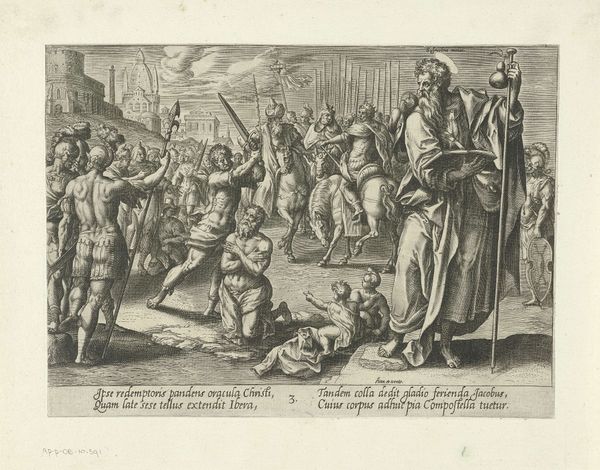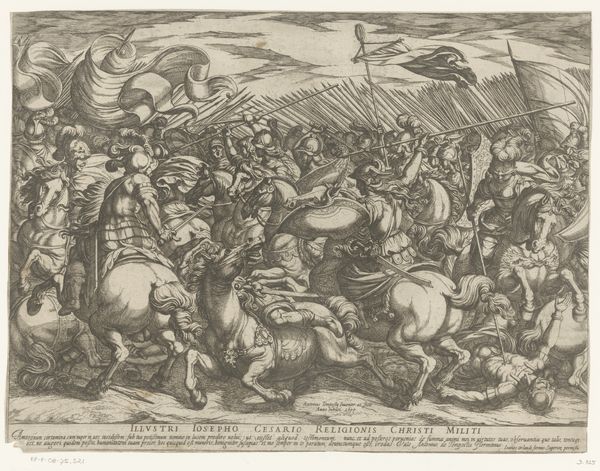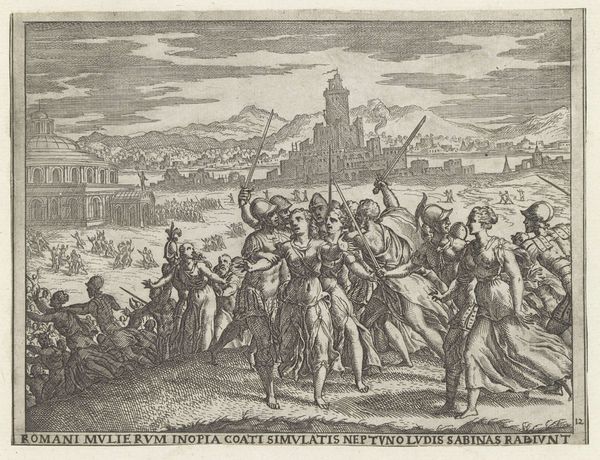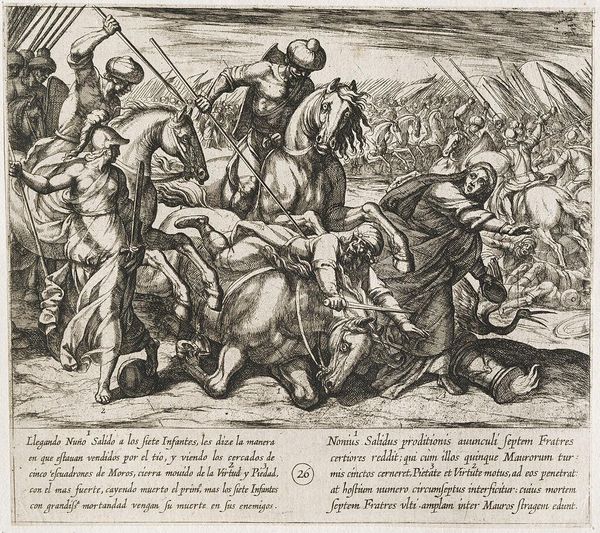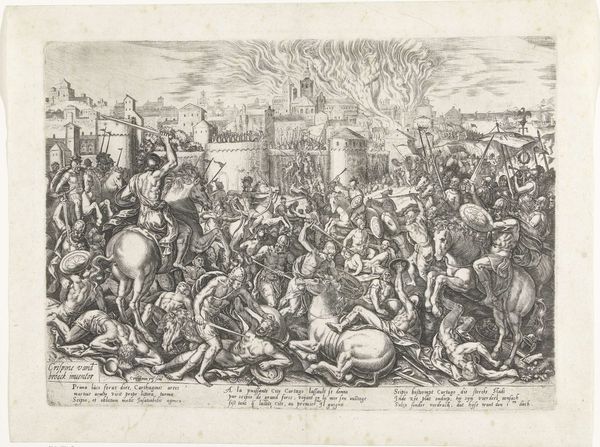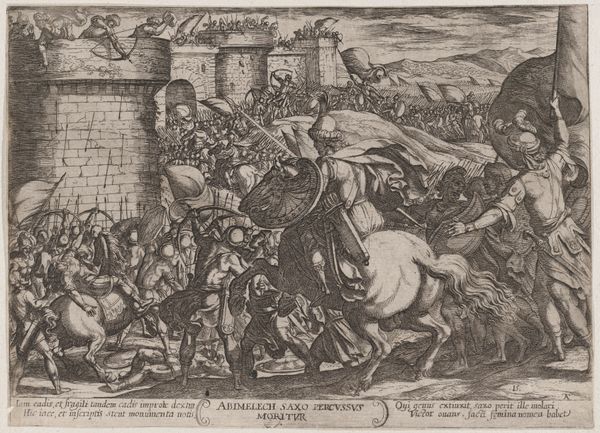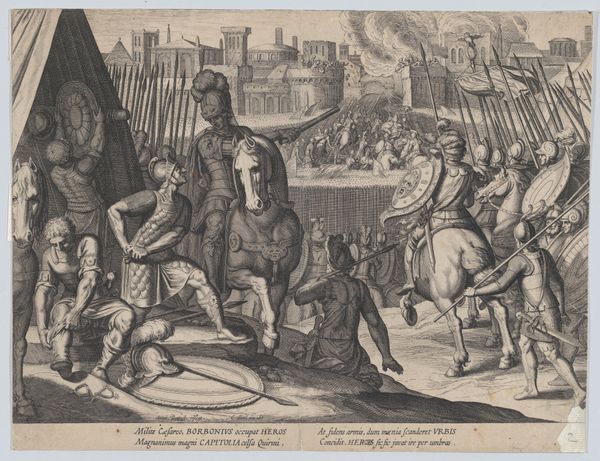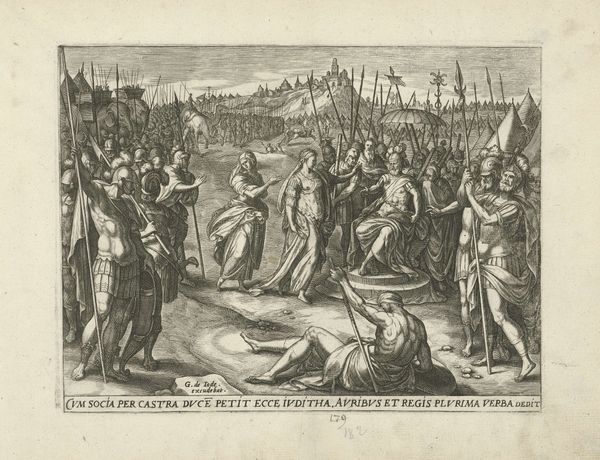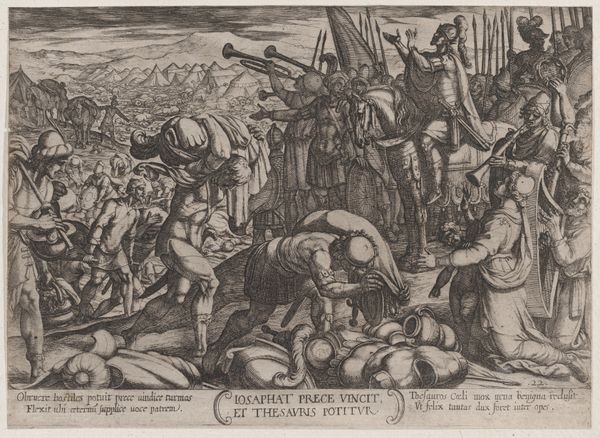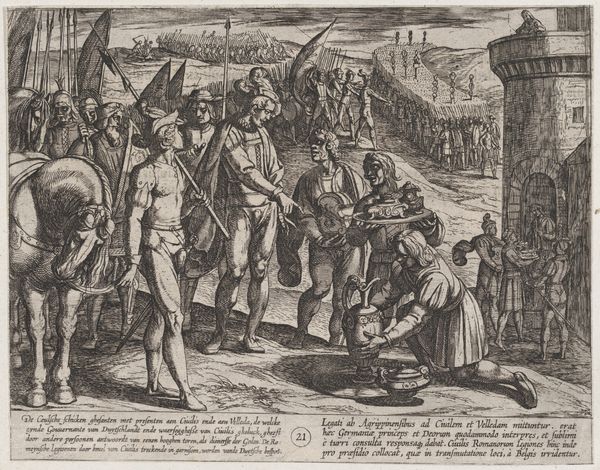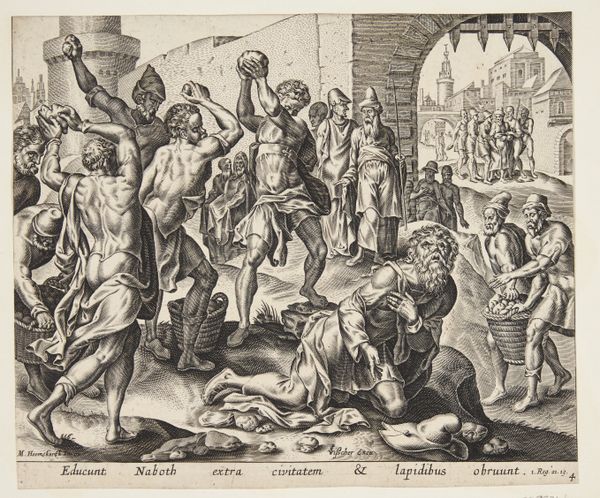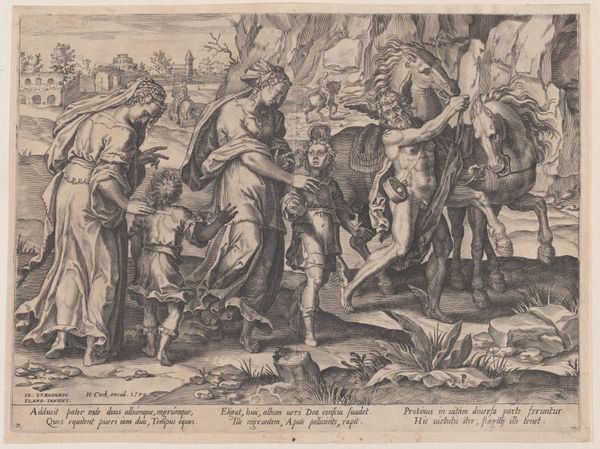
drawing, print, engraving
#
drawing
#
medieval
# print
#
landscape
#
figuration
#
cross
#
soldier
#
history-painting
#
engraving
#
christ
Copyright: Public Domain
Editor: This engraving, "Christ on the Way to Calvary," made sometime between 1555 and 1565, presents a harrowing scene. The composition feels incredibly crowded and chaotic. There’s a real sense of brutality emanating from the throng of soldiers. How do you interpret the social commentary embedded in this piece? Curator: It's critical to consider the context in which this print would have circulated. Bosch and his followers often used prints to disseminate politically charged messages to a broader audience. The density and ugliness aren't just aesthetic choices; they're a direct reflection of the social and political corruption Bosch saw around him. Think about the Reformation brewing at the time – images like this tapped into existing anxieties about religious authority and societal decay. Editor: So the visual chaos is deliberate, a reflection of the era's turmoil? Curator: Precisely. Look at how Christ is almost lost in the crowd, obscured by the soldiers and their implements of torture. This visual subordination speaks to a perceived abandonment of true Christian values by those in power. The print implicates institutions and societal structures, not just individual bad actors, in Christ's suffering. Is there any evidence of that critique in other artwork by the same artist? Editor: You're right, that theme of institutions failing the common person resonates throughout other works attributed to Bosch, too. I hadn't quite made that connection here before. Curator: The effectiveness of prints like this lies in their ability to visually connect individual suffering, such as Christ's, with a broader critique of the societal and political forces contributing to that suffering. They were powerful tools for shaping public opinion and fostering social change. Editor: I’ve gained a deeper appreciation of how the medium itself, printmaking, contributed to the painting's public impact and lasting legacy. Curator: And I, thinking aloud, appreciate how the mood of chaos in the image also adds to the intended political commentary of the artist, something I'll be looking for again.
Comments
No comments
Be the first to comment and join the conversation on the ultimate creative platform.
